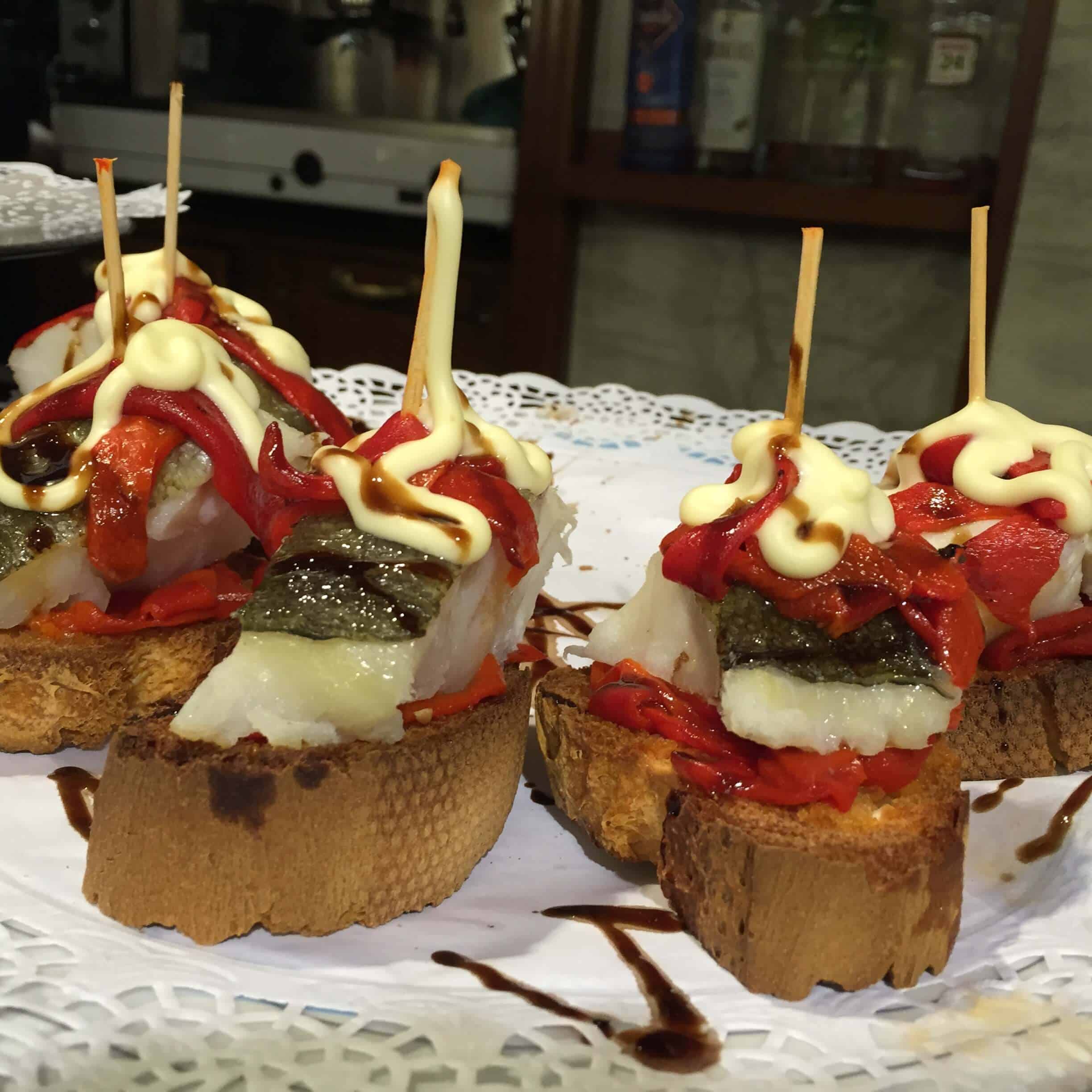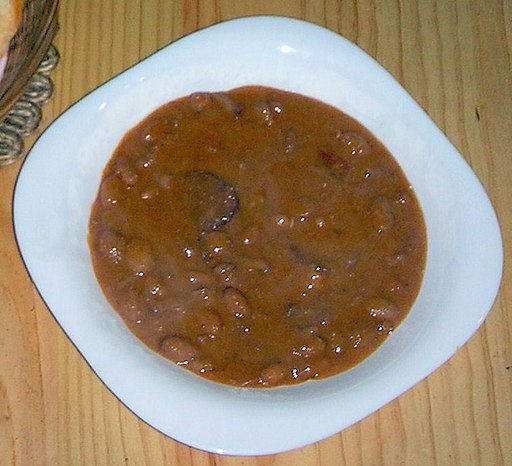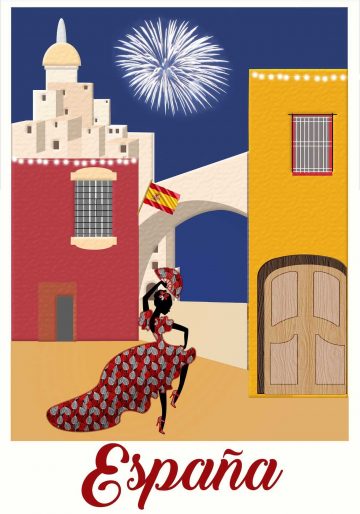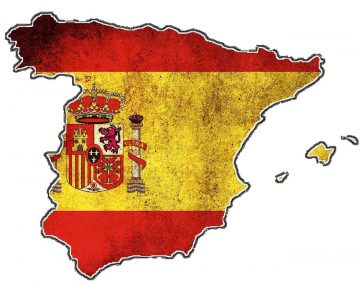After writing the first part of this Spanish cuisine guide, my mouth was just watering thinking about all the possibilities that Spain has to offer (and not only when it comes to food, I must say!). For the second part of the Spanish cuisine guide, I’m giving you a small tour on other regions of Spain: Castilla-La Mancha, Castilla y León, La Rioja, Extremadura, and Madrid.
Also, don’t forget to check out the third part of the guide on Spanish cuisine.
Castilla-La Mancha
What you should know
Also known as Castilian-Manchego cuisine. Its origins are those of shepherds and peasants foods. Grains predominate in many dishes of this cuisine: soups, porridge, bread (obviously), etc. If you don’t like garlic, stay away from this dishes because most of them include it.
Fun fact: Manchara in Arabic means “dry land” and it’s a reflection of the arid lands (and it also describes the quality of the dishes of the region)
Staple dish
Tortas de gazpacho or gazpacho manchego. Not the same gazpacho as the Andalusian one, this is served in a flat bread with tomato; pigeon, hare or rabbit; bay leaves; garlic; and thyme. It makes an appearance in Don Quixote as galianos.
Other dishes you should try
- Comfort food: pisto manchego (tomatoes, onions, courgettes, eggplant, peppers and olive oil, similar to ratatouille)
- Meat dishes: conejo al ajillo (rabbit with garlic sauce), perdiz escabechada (marinated partridge), huevos de codorniz (quail eggs), salpicón (diced meat with vegetables), ajo puerco (pork liver with garlic and vegetables), morteruelo (similar to foie gras)
- Snacks: carcamusa (pork with seasonal vegetables stewed with tomato)
- Cheese: manchego cheese (of course!)
Castilla y León
What you should know
Guisos and asados are typical in this region. Guisos are cooked dishes and asados grilled or roasted meats. Cheeses, legumes, and embutidos are common too.
Staple dish
Cocido maragato, it has seven types of meat, a soup, chickpeas, and collard greens. The special thing about this dish is that it’s served “in reverse.” First, you eat the meats, then the vegetables, and finally, the soup.
Other dishes you should try
- Soups: sopa de ajo (garlic soup)
- Sausages: morcilla (black pudding with spices), salchichas de Zaratán, botillo del Bierzo (of Roman origins), jamón de Guijuelo
- Meat dishes: cochinillo asado (roast piglet), lechazo asado (roast lamb), suckling pig, hornazo de Salamanca (pastry filled with meat), hornazo (meat pie)
- Cheeses: Serrada cheese, Burgos’ soft cheese, queso castellano (from sheep’s milk), Valdeón cheese.
- Drinks: wine of Toro, Ribera del Duero, Rueda, and Cigales.
La Rioja
What you should know
Since La Rioja is on the route of the Camino de Santiago, it has been a land of travelers and exchange. The regions around it heavily influence this cuisine. Many dishes are adaptations of other regions’ dishes. Lamb (of Muslim heritage) and veal are very popular, after pork… that’s the most popular meat here! Red wine is very famous in this region so many dishes are served with wine or have wine as an ingredient, especially desserts.
Staple dish
Rioja style potatoes. This dish may seem simple but it’s delicious: potatoes with chorizo, cooked with onion, bell pepper, and garlic.
Other dishes you should try
- Comfort food: caparrones (stew made with red kidney beans and chorizo), huevos a la riojana (garlic, bell pepper, and boiled egg)
- Meat dishes: pochas con codornices (bean plants with quail), chuletas al sarmiento (lamb chop with vine shoots)
- Fish dishes: bacalao a la riojana (cod with bell pepper and tomato), bonito con tomate (tuna with tomato, onion, and bell pepper)
- Desserts: peras al vino (pears with red wine), fardelejos (from Arab origin, puff pastry filled with almonds), and torrijas (like French toast)
- Drinks: Rioja wine (it has a designated origin status)
Extremadura
What you should know
Most of the dishes are simple and low cost because the origin of this cuisine goes back to food made by shepherds. Extremaduran cuisine is famous for its Iberian pig herds that are fed with acorns in the fields of Montánchez. Typically, the portions are big, reflecting the spirit of generosity of its people.
Staple dish
Cocido extremeño, a stew made with chickpeas and other meats, most of the times, chicken. It also comes with chorizo, bacon, and morcilla.
Other dishes you should try
- Soups: potaje de garbanzos y judías blancas (chickpea and bean soup), garlic soup, potaje de castañas secas (chestnut soup), gazpacho extremeño (a variant of gazpacho but with ham)
- Pork and mutton dishes: callos con manos de cerdo (tripe and pig’s feet), caldereta de cordero (mutton stew), cabrito a la hortelana (kid, as in young goat, with vegetables), Chanfaina (stew of mutton liver, brain, heart and kidneys, cooked with bay leaves, breadcrumbs, garlic, and boiled eggs)
- Cheeses: torta de la Serena, torta del Casar
- Desserts: perrunillas (a kind of butter cookie but with lard), and magdalenas (muffins with anise), bollos fritos (fried buns)
Madrid
What you should know
Since Madrid is a place where people from other places emigrated during the 16th century, most of its dishes are made from modifications of others or including traditions of other regions of Spain.
Fun fact: Madrid is the city in Spain where some of the first restaurants appeared. it’s no surprise that they now have amazing VEGETARIAN OPTIONS.
Staple dish
Cocido madrileño. Beef, chickpeas, sausage, and vegetables. You get three courses when you eat it: first, you eat the soup, then the beans and vegetables, and finally, the meat and sausages.
Other dishes you should try
- Meat dishes: callos a la madrileña (chorizo, hoof, and snout of cow, calf or lamb tripe, and sweet paprika), gallinejas (fried sheep entrails),
- Fish dishes: gambas al ajillo (prawns with garlic),
- Snacks: tapas (a classic!), bocadillo de calamares (fried squid rings), patatas bravas (potato with spicy tomato sauce, the literal translation is brave potatoes)
- Desserts: rice pudding, meringue milk, curd, churros, buñuelos, rosquillas tontas y listas (donuts with sugar glaze, dry meringue, or almond dust, the literal translation is smart and dumb donuts haha), huesos de Santo (marzipans), tejas and barquillos (you can find these in the streets)
- Drinks: anís (anise grown in Chinchón), wine of the zone, leche merengada (cold cinnamon flavored meringue), and horchata
As you can see, these regions have a lot of options for the foodie inside you!










